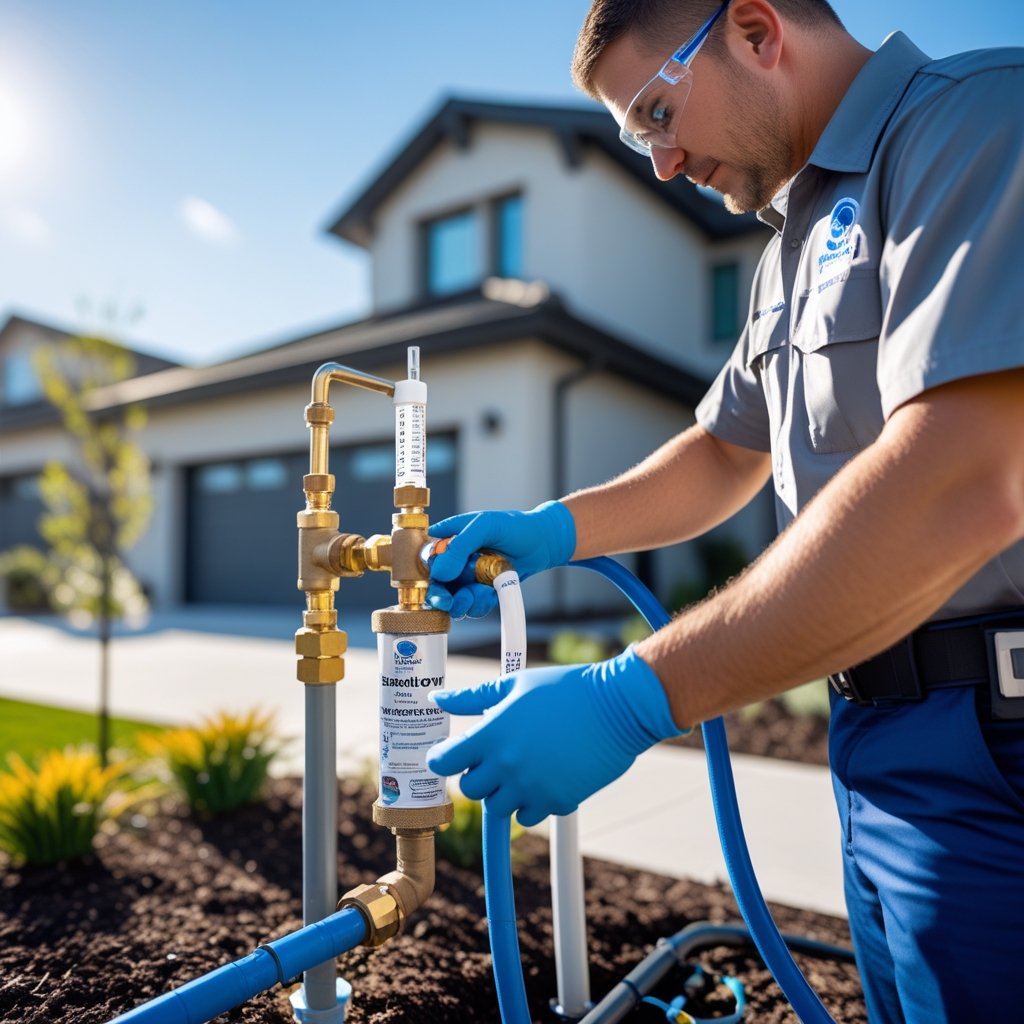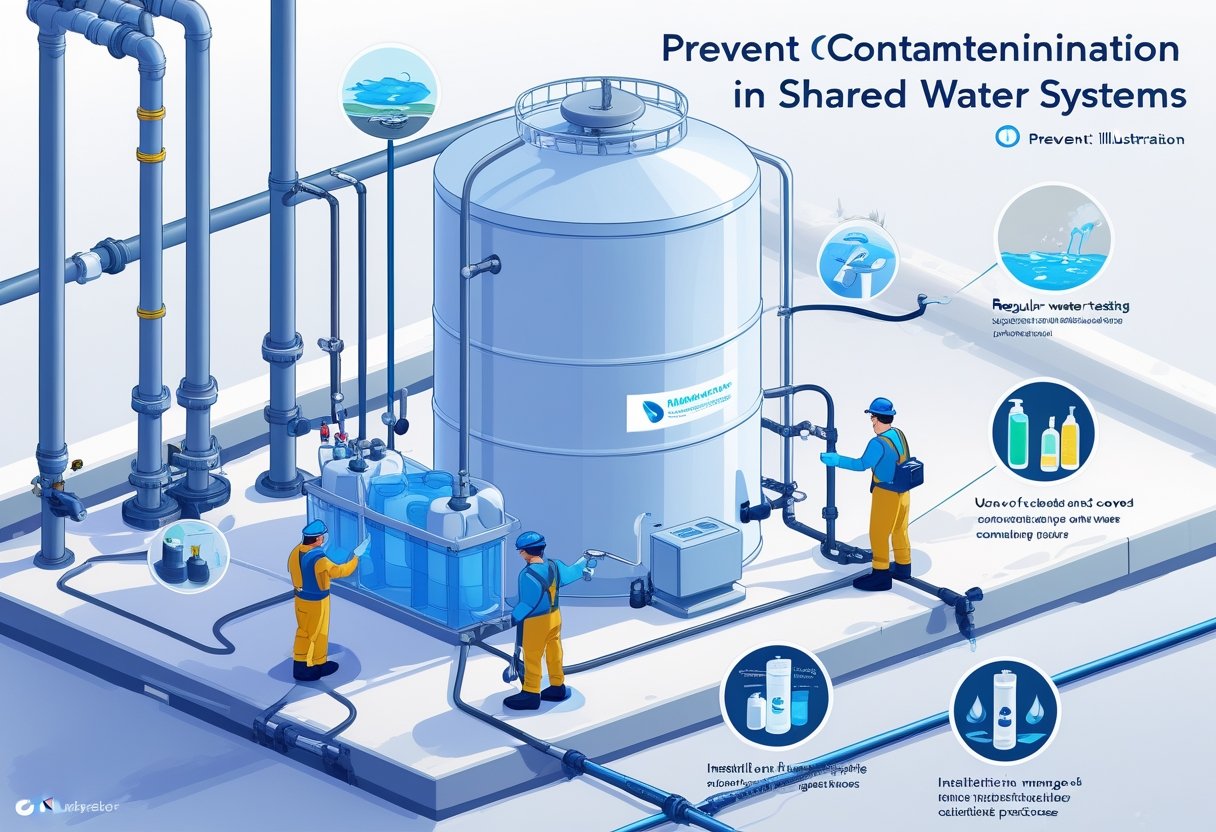Backflow testing matters a lot for HOAs in California, both for water safety and to keep up with local rules. If you manage or own property, it’s on you to make sure your backflow prevention devices get tested every year, or you risk contaminating the water supply. This protects your community’s health and keeps you in line with state and county requirements.
Let’s be honest—nobody wants a complicated, time-wasting process. Pacific Backflow gets that. They cover all of San Diego County with certified testing, repairs, and installations, plus fast reporting, so your HOA can stay worry-free.
Figuring out the ins and outs of testing and record-keeping can feel overwhelming, but it’s crucial for protecting your water and avoiding expensive penalties. Here’s what you need to know about backflow testing for HOAs in California, so you can keep things safe and compliant.
Understanding Backflow Testing for HOAs
Backflow testing keeps your community’s water clean by checking devices that stop water from reversing direction. It’s a health and legal must-have, especially in HOA neighborhoods. Understanding what backflow is, why it’s a big deal, and California’s rules helps you manage your water system without headaches.
What Is Backflow and Why Does It Matter?
Backflow is when water flows in reverse, right back into your clean supply. That means dirt, chemicals, or even germs can get into what you drink. Usually, this happens if water pressure drops suddenly—think fire hydrants or water main breaks.
That’s a real risk, not just a technicality. You’ve got backflow preventers in place to block this, but if they fail or go unchecked, your water could get contaminated. Regular testing catches problems before they become disasters.
Importance of Backflow Prevention in HOA Communities
HOAs are on the hook for keeping the community’s water safe. Since homes often share water lines, a backflow problem in one spot can mess things up for everyone.
Regular backflow testing makes sure these devices work. It also keeps your HOA out of trouble with water safety laws.
Staying on top of backflow devices means fewer emergencies and repairs down the road. A little investment in inspections and maintenance now saves money (and headaches) later.
Overview of Backflow Testing Requirements in California
California law (Title 17 of the California Code of Regulations) says you’ve got to test backflow devices every year. This rule covers all HOAs and property owners.
After each test, you need to file a report with the local water authority to show you’re compliant. If a device fails, fix or replace it right away.
Pacific Backflow handles San Diego County’s testing and paperwork. Their certified techs keep your HOA on schedule with these rules and help protect your water with minimal fuss.
California State Regulations for Backflow Testing
California requires regular testing and upkeep of backflow prevention devices to keep the water supply safe. These rules cover HOAs and property managers—ignore them, and you risk penalties and health problems.
Regulatory Agencies and Compliance
The local water district enforces backflow testing, guided by state law (California Code of Regulations, Title 17). HOAs must follow these rules, which means annual testing by certified pros and timely reporting.
You’re expected to keep every backflow device on HOA property up to standard. Certified testers like Pacific Backflow handle testing, repairs, and reporting. Good records and timely submissions are non-negotiable if you want to avoid headaches later.
Key Legal Requirements for HOAs
Every backflow preventer needs testing at least once a year. That includes devices on irrigation systems, fire sprinklers, and other water lines. Only state- or locally-certified technicians can do the job.
You also need to keep detailed records of each test and any fixes. If a device fails, fix or swap it out ASAP to prevent contamination. Devices must be installed properly and easy to reach for testing—no exceptions.
Penalties for Non-Compliance
Skip testing or send in late reports, and your HOA could get hit with fines or even water shutoffs. These penalties can add up fast, especially if you ignore repeated warnings.
Water agencies might give you tight deadlines to fix violations. If you don’t comply, you put your community’s water at risk—and open yourself up to bigger legal and health problems. Regular testing and maintenance keep you out of trouble.
Pacific Backflow is ready to help HOAs in San Diego County stay compliant and avoid unnecessary stress.
The Backflow Testing Process for HOAs
Testing your HOA’s backflow devices keeps your water safe and meets California’s requirements. Here’s what you need to know about how it works, when to book it, and how to stay on top of paperwork.
How Backflow Testing Is Performed
A certified tester checks the backflow device to make sure water flows in the right direction. They measure pressure and look for any problems. The whole thing usually takes 30 to 60 minutes, depending on how complex your system is.
If the device fails, the tester lets you know so you can get it fixed or replaced. It’s your job to make sure the device actually works—otherwise, you risk contamination.
Pacific Backflow gets the job done quickly and reliably, so you don’t have to worry about compliance.
Testing Frequency and Scheduling
California law says HOAs must test backflow devices at least once a year. Some local districts might want it done more often, so double-check your local rules.
It’s smart to schedule tests early to avoid last-minute scrambles or penalties. Since devices are often spread out, booking ahead makes everything smoother.
A trusted service like Pacific Backflow keeps you on schedule and in line with local requirements.
Record-Keeping and Reporting
After testing, you need to keep the results on file for your HOA and provide proof to the water authority. Most districts require official test reports.
Usually, your testing company submits these reports directly, but you should always keep your own copies just in case.
Good records help you dodge fines and show you’re serious about water safety. Make sure your tester handles the paperwork quickly and accurately.
Choosing a Certified Backflow Tester in California
Picking the right tester means you get reliable results and stay legal. You want someone with up-to-date certification, a solid track record, and experience dealing with local agencies.
Certification Requirements
California requires testers to have current certification from an approved program. That means they’ve passed the right exams and finished required training.
Ask if your tester keeps up with continuing education. This way, they know the newest standards and best practices.
They also need to use calibrated equipment—accurate tools mean you can trust the results.
Tips for Hiring a Reliable Tester
Find testers who specialize in backflow work and know the local area. Ask for references or read reviews from other HOAs.
A good tester should explain their process clearly, schedule quickly, do thorough inspections, and submit reports for you.
See if they can handle repairs or new installations if something fails. That saves you time and hassle.
Pacific Backflow has a great reputation in San Diego County, with nearly 40 years of experience.
Working With Local Water Authorities
State law says you must send test results to your local water agency every year. Certified testers usually handle this, which takes a load off your plate.
Each water district might have its own forms or online systems. Make sure your tester knows what’s required for your HOA and doesn’t miss deadlines.
Keeping a good relationship with these agencies helps you stay compliant. If you get hit with a fine or compliance issue, a good tester can help you sort it out.
Work with someone who knows the local rules, and you’ll avoid most headaches.
Costs and Budgeting for HOA Backflow Testing
Budgeting for backflow testing can be tricky if you don’t know what to expect. Understanding the typical costs helps you plan and avoid surprise expenses.
Typical Costs for Testing
Backflow testing prices depend on where you are in California and how many devices you have. In San Diego County, it’s usually $75 to $150 per device.
If your HOA has several devices, costs can climb fast. Difficult access or repairs after testing will bump up the price. Repairs could mean fixing seals or swapping out worn parts, which adds to the bill.
If a device fails, you could pay extra for re-testing. Since yearly testing is mandatory, it’s smart to budget for possible repeat tests and fixes.
Budget Planning for HOAs
To keep your HOA compliant, budget for testing, repairs, and possible replacements every year. Start by listing all your backflow devices and adding up the expected testing costs.
Set aside a contingency fund for surprise repairs. These can range from $150 to $500 depending on the problem. If you have older devices, full replacements can run over $1,000.
Using a provider like Pacific Backflow streamlines budgeting. They handle testing, paperwork, and can give you quick repair estimates. Planning ahead means fewer nasty surprises and keeps your HOA safe and legal.
Common Challenges and Solutions for HOAs
Backflow testing in an HOA isn’t always straightforward. You’ll need to communicate clearly and handle repairs efficiently. Getting homeowners on board and planning for fixes is key to keeping everything up to code.
Gaining Homeowner Cooperation
Getting everyone to cooperate isn’t always easy. Some homeowners don’t get why annual backflow testing matters or drag their feet on giving access. Clear communication is your friend here.
Send out reminders early. Explain the legal requirements and health risks in simple terms. Give clear deadlines for access and maybe even offer flexible scheduling.
If folks resist or stall, remind them the whole community’s water safety depends on this. Let them know that ignoring the rules could mean fines for both them and the HOA. Sometimes people just need to hear what’s really at stake.
Managing Repairs and Retesting
After testing, some backflow preventers might fail or just need a quick fix. Honestly, planning ahead is the only way to avoid last-minute headaches and compliance delays. It helps to have a go-to service you trust for fast repairs—waiting around just isn’t worth the risk.
Set up a simple way to report failed devices and book repairs. Let homeowners know right away if their device needs work, and give them a realistic idea of when it’ll get done. Repairs have to follow your local water district’s codes, or you could end up with more problems.
Once repairs are wrapped up, get retesting done as soon as possible to confirm everything’s in order. Stay on top of your paperwork and file reports quickly—this keeps your HOA out of trouble and helps keep water safe. If you’re short on time or patience, companies like Pacific Backflow can really make life easier by handling repairs and all that paperwork for you.
Best Practices for Ongoing Compliance
Keeping your HOA’s backflow preventers tested—and making sure residents know what’s up—really does a lot to protect your water. Regular testing and open communication go a long way toward meeting California’s requirements.
Establishing a Testing Schedule
Set up a yearly testing routine for every backflow preventer in your HOA. California law says you need annual tests, and missing a deadline can mean fines or, worse, water quality issues.
Make a calendar that tracks when each device was last tested and when it’s due again. Reminders for property managers or maintenance teams help a ton—nobody wants to scramble at the last minute.
It’s smart to work with professionals like Pacific Backflow who’ll handle testing, repairs, and reporting. Having a dependable service really cuts down on stress and makes sure local water authorities get what they need.
Hang on to records of all your tests, repairs, and replacements. Good documentation shows you’re compliant and can even help you spot patterns—maybe you’ll notice certain equipment needs an update, or your team could use a quick training refresh.
Educating Residents About Water Safety
Let’s be real—most residents don’t think about backflow devices unless something goes wrong. Take the time to explain why testing matters and how a broken device can let dirty water sneak into their drinking supply.
Share simple info about risks, especially for homes with irrigation systems or pools. Remind folks to keep devices accessible for testing—it’s a small thing, but it helps a lot.
You might host a quick meeting now and then, or just send out a newsletter with reminders and tips. When residents know to report leaks or damage early, you can catch problems before they get out of hand.
Clear, friendly updates build trust. People are more likely to cooperate when they know what’s going on. It all adds up to a stronger backflow program and a healthier community.
Frequently Asked Questions
Backflow testing keeps your community’s water safe and helps your HOA stay on the right side of the law. It’s good to know how often you need tests, who can do them, and what to do if something goes sideways. Keeping everyone in the loop and understanding the rules makes a difference.
What are the legal requirements for backflow testing in California communities?
Backflow devices need testing at least once a year. Your HOA should keep records of every test and repair. These rules are there to protect the local water supply from contamination.
How often do Homeowners Associations need to conduct backflow testing?
HOAs in California have to test backflow preventers every year. Some counties add their own rules, so it’s worth double-checking your local guidelines just to be sure.
Who is qualified to perform backflow testing for our HOA?
Only certified technicians can handle backflow tests. Hire licensed pros who know the right procedures. Pacific Backflow, for example, offers certified testing and files reports for you.
What are the penalties for not complying with backflow testing regulations?
Skipping tests or not reporting results can land you with fines or even legal action. Non-compliance also puts your community’s water at risk, and that’s a health issue no one wants.
Can we notify residents about upcoming backflow testing, and if so, how?
Absolutely, and you should. Send notices by email, regular mail, or just post info in common areas. The more notice residents get, the better—especially if you’ll need access to their property.
What steps should our HOA take if a backflow preventer fails the test?
If a device fails, get a certified technician in as soon as possible to handle repairs or a replacement. Once that’s sorted, set up a retest. Hang onto all the repair records, and let the water authority know about any updates so you stay on the right side of compliance.











